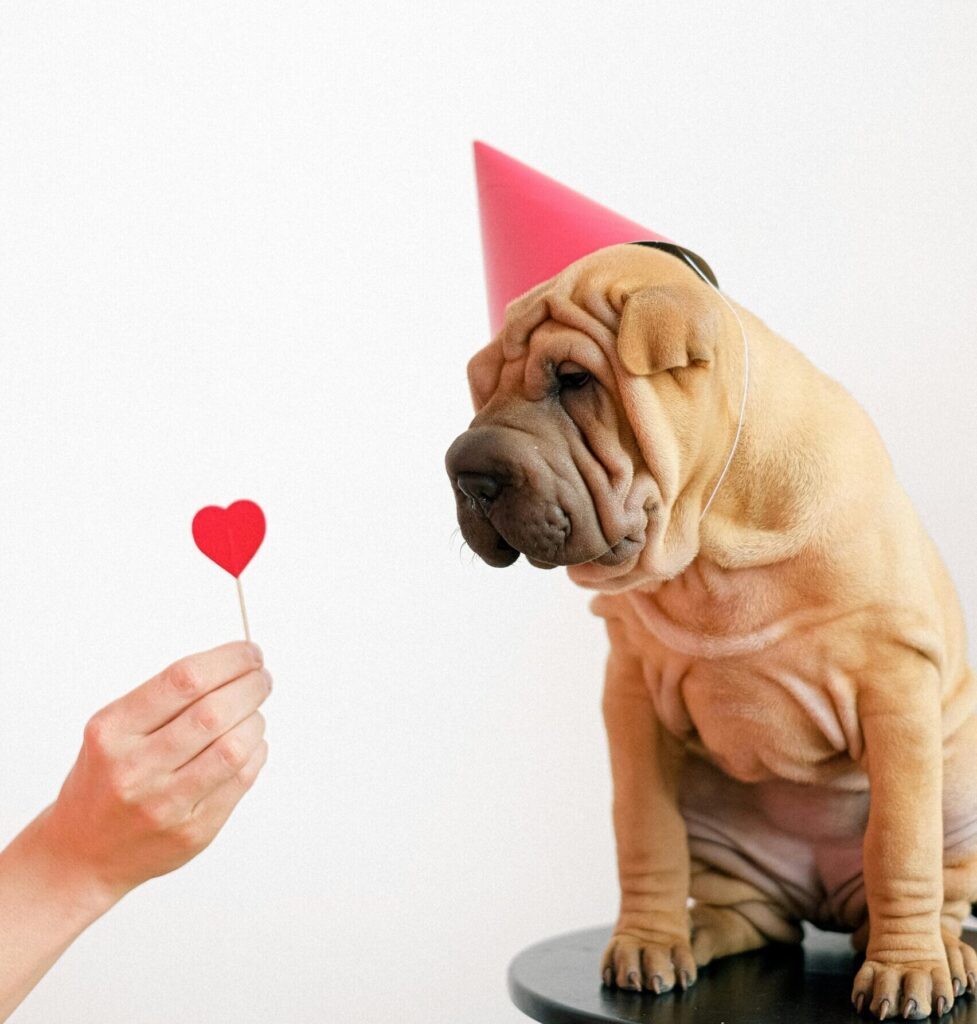Summery :
- My dog is scared, can I help him?
- How Fear Manifests in Dogs
- What scares the dog
- A fearful dog needs reassurance from you
- How can I get my dog to stop being afraid?
- A Scared Dog on New Year’s Eve
- When is it appropriate to involve an expert?
1- How Fear Manifests in Dogs
In order to be able to counteract this attitude from its initial stages, it is useful to recognize what precedes fear, namely uncertainty. In this case, for example, the dog has a retracted tail and an alert posture, with tense muscles. If this uncertainty increases, the animal clearly lowers and bends its head, looks away and retracts its tail even more.
Some dogs even start panting or shaking. Be careful: if an anxious dog feels cornered, given the emergency situation (or what is thought to be an emergency), it may even bite!
[blockquote align=”none” author=”Steve Jobs”]Your time is limited, so don’t waste it living someone else’s life. Don’t be trapped by dogma – which is living with the results of other people’s thinking[/blockquote]
2- What scares the dog
There are many reasons why a dog is afraid of everything: bad previous experiences with people, mistakes in education made in the first few weeks or simply a character inclination. A good basis for having a confident and self-assured four-legged friend is an inprinting full of different stimuli. If apuppy makes many acquaintances and experiments a lot, he will tend to remain open to new things even later on.
But you can also teach an adult dog to develop a strong self-esteem by offering him the necessary sense of protection. The way to do this is simple: teach him small games in a calm environment, and praise him abundantly for each step forward! In the long run, this type of training gives your furry friend a good boost of self-confidence and also strengthens the bond between you.
A fearful dog needs reassurance from you
At the first sign of fear in unfamiliar situations, the first thing to do is to stay calm. If you as the leader of the pack do not show any concern, your four-legged friend will conclude that the “danger” is not that serious. With dogs who are anxious by nature, it can be helpful to be proactive even with their small uncertainties and master the possible “danger situation” together.
Under no circumstances should you scold your dog when he finds himself in situations that trigger anxiety. But even very intense “comforting” on your part can be counterproductive: it does not mean that you should ignore your dog, but that it is better to talk to him in an encouraging way, rather than cuddling him.
How can I get my dog to stop being afraid?
When there are specific factors that cause the dog to be afraid of everything, thefood and thedog treats can become your allies. Is your dog afraid of the noisy mixer? Turn it on in the next room before feeding your hungry furry friend.
If you repeat this exercise regularly, the dog will not only get used to the noise, but will also associate it with a positive experience. However, it is crucial that the dog is only insecure and not terrified when you feed him in this way – so start little by little. The principle can be followed in a similar way for many other situations: be creative! Eliminate your fearful four-legged friend’s fear of thunderstorms by putting on a CD with nature sounds or listening to the thunderstorm noise on the Internet together.
If the trigger of the fear is something you see, instead, associate it positively with thefood : for example, put abiscuit or achew bone near the “scary” object, at a distance that the dog can tolerate. The fact that he has to chew for longer is particularly appropriate in this circumstance, because this way your anxious dog remains in “relax mode” for longer.
Even playing in the immediate vicinity of something that causes anxiety can calm the dog: the ideal is to do it with afamiliar game , because anything new in such a context would be even more irritating. Approach the “disturbing” object step by step – it may take days or weeks to make progress, especially with older animals.
So be patient! It is also important to always end the exercise with a positive experience. If your dog does not dare to approach the object in question, stay still with your furry friend on the leash until he has visibly calmed down. Then give him a treat and go back calm and relaxed.
A Scared Dog on New Year’s Eve
There are many dogs that have problems with New Year’s Eve celebrations. This is something that is difficult to train, but you can help your furry friend to be much less afraid through your calm and relaxed example. It is better to spend the evening with your animal companion and create a pleasant atmosphere, perhaps you can distract him with a game and some fun exercises.
Don’t feed him until midnight, so that he’s really hungry and with a bit of luck he’ll forget his fear of fires and fireworks.
If he remains very tense, stay close to him but be relaxed. Avoid staring at your anxious dog for a long time – and not just on New Year’s Eve – because being stared at intensely could end up upsetting him.
When is it appropriate to involve an expert?
If you are unable to make progress and your dog remains extremely fearful in certain situations, it makes sense to think about how to avoid these stressful situations for your furry friend in the future, if possible. Otherwise, you can look for a good school fordog education , which together with you and your four-legged friend can find the best solutions to this problem.
3- How serious is it?
The severity of a heart murmur in dogs varies: some murmurs are physiological (so-called innocent murmurs); others reflect a mild health problem, which however should still be monitored; still others are the consequence of a serious condition.
Characteristics of the murmur that help describe its severity are:
- Noise intensity;
- When it occurs;
- Duration;
- Which part of the heart does it come from.
It is the veterinarian’s job to correctly interpret the severity of the murmur and adopt the right treatment.
Depending on how serious the problem is, the therapeutic approach also changes.
READ MORE ON HEALTH AND CARE
4-What are the symptoms?
Heart murmur in dogs can manifest itself with:
- Loss of appetite and weight loss .
- Cough ;
- Lethargy ;
- Weakness and easy tiredness;
- Difficulty breathing (the dog pants excessively even after simple efforts), rapid breathing and/or dyspnea
- Collapse
- Swollen abdomen
- Pale gums;
5- What tests should be done for diagnosis?
The detection of a heart murmur in dogs is typically done through cardiac auscultation with a stethoscope.
To detect a heart murmur in a dog, cardiac auscultation performed with a stethoscope (or phonendoscope) is sufficient. During this examination, the veterinarian also evaluates the degree of loudness of the abnormal noise, a characteristic that is not always related to the severity of the problem.
Once the murmur has been identified, it remains to be understood whether the anomaly is due to a specific heart disease (structural defect, endocarditis, valvular disease, etc.) or to an extracardiac condition (e.g. anemia, pregnancy, hypoproteinemia).
To clarify this aspect, the veterinarian uses various tests: first, he evaluates the animal’s clinical history in relation to age and present symptoms ; subsequently, if further investigation is needed, he also relies on:
- Chest X-ray ;
- Electrocardiogram (ECG);
- Echocardiography ;
- Blood tests .
Such an approach is important to avoid unnecessary checks; the basic idea is to first understand the real extent of the problem and then, if necessary, investigate further.
Grades of Heart Murmur in Dogs: How Many Are There and What Do They Mean?
Although not always directly proportional to the severity of the murmur, the intensity of the abnormal noise is an important parameter used to classify heart murmurs in dogs.
The classification based on the intensity of the noise distinguishes 6 degrees of heart murmur, identified by the first six Roman numerals:
- Grade I murmurs : These are the least audible, barely perceptible murmurs. They are generally not serious.
- Grade II murmurs : These are slightly louder than the previous ones, but still quite quiet.
- Grade III murmurs : These are murmurs that are easily detected with a stethoscope, as the intensity of the noise is significant. They can indicate an important health condition, at least to be monitored over time.
- Grade IV murmurs : These are murmurs whose intensity is between grade III and grade V murmurs. They are easily audible with a stethoscope and should at least be monitored over time, because they could be the result of a serious condition.
- Grade V Murmurs : This category includes murmurs that can be detected simply by placing a hand on the dog’s chest.
- Grade VI murmurs : These are even louder murmurs than the previous ones. In fact, they can be heard when the stethoscope is not even placed on the animal’s chest .
They generally indicate a serious health condition.
Heart Murmur in Dogs: What Other Features Should You Consider?
The intensity of the noise provides important indications, but, as previously mentioned, to correctly interpret the severity of a murmur the veterinarian must also evaluate other parameters, which are:
Which part of the heart is it coming from ? The location where the murmur is heard best helps determine which valve is malfunctioning and which chambers of the heart are affected.d peaceful atmosphere, where other guests seem comfortable, you may have found the right place.
When the murmur occurs . A murmur can occur in the systolic phase (when the heart contracts ), in the diastolic phase (when the muscle relaxes), or constantly throughout the entire heartbeat cycle .
Duration of the murmur . A heart murmur can be long or short.
6- How to cure it?
Treatment varies depending on the severity and cause of the heart murmur .
Generally, if the dog has a mild heart murmur of little clinical relevance (also called a physiological murmur), the therapeutic management is limited to periodic monitoring of the animal’s cardiac conditions , in order to evaluate the progress of the problem and identify any worsening in good time.
On the contrary, if the murmur in the dog is attributable to a specific pathology (anemia, hyperthyroidism, mitral insufficiency, etc.), a specific therapeutic plan is needed , which, depending on the case, could include
- Drugs (inodilators or phosphodiesterase inhibitors, diuretics , ACE inhibitors , etc.);
- Specific diet ,
- Cardiac surgery and
- Other supportive care .
Clearly, even in these more complex cases, periodic monitoring of the animal’s health conditions remains essential.
7- What is the prognosis?
For a dog, the prognosis for a heart murmur is variable: it all depends on the nature of the problem and the effects of the therapy.
Generally speaking, the more serious the cause of the murmur, the more uncertain the prognosis. That said, however, it should be noted that even in the presence of serious heart murmurs, current therapies can be extremely effective and drastically improve the animal’s health conditions.
8- Heart murmur in puppies, what are the causes?
Puppies can also have a heart murmur.
In these cases, there are two potential causes:
- The aforementioned innocent murmur , due to growth and destined to disappear after a few months of life.
- Congenital heart defects . Murmurs that result from them are usually loud and, depending on the case, may require periodic monitoring of the animal’s health conditions or corrective heart surgery.




